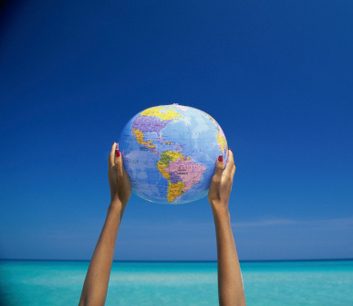
Environmental success
Good news about the environment is hard to come by. For one thing, in the view of many people, Canada’s image has been tarnished, or should we say tarred, by the ongoing development of the oil sands. For another, the economic rise of China and India appears to be at the cost of the environment. Global warming threatens the world’s food supply, and is being linked by studies to some (though not all) of the extreme weather events the world has seen recently.
But when environmental change is looked at through the lens of time-the modern environmental movement arose in the early 1970s, a short 40 years ago-there is reason for hope. Collective action, progressive policies and new technologies have actually limited damage and saved lives. So, with another Earth Day on the horizon (it’s on April 22), here are seven green victories-big and small, from near and afar-that are cause for celebration.
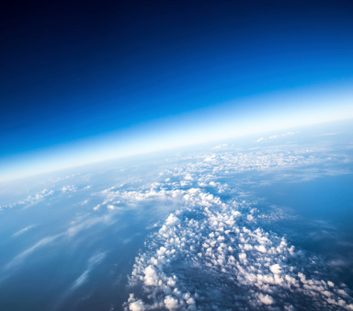
1. Ozone recovery
No, the infamous ozone hole that appears over the Antarctic each winter hasn’t disappeared, but scientists agree we have saved the ozone layer itself, the part of the atmosphere that shields Earth from the sun’s harmful ultraviolet rays. That’s thanks to the Montreal Protocol, an international agreement to phase out production of chemical coolants such as chlorofluorocarbons, or CFCs. Since it was signed in Montreal in 1987 by 24 nations (today it has been ratified by every country on Earth), the amount of ozone-depleting CFCs in the atmosphere has begun to decrease and the ozone layer’s thickness has stabilized, demonstrating the life-saving impact an international environmental treaty can have.
What’s next? The global community has its sights on a new target: hydrofluorocarbons. HFCs don’t deplete ozone, so they are now widely used as coolants in refrigerators and air conditioners. But they are “super-pollutants,” potent greenhouse gases that trap heat in the atmosphere. Fortunately, by last September, China and the Group of 20 (including Canada and the U.S.) had announced plans to phase down the production and use of HFCs. The next challenge? Get the rest of the world to follow.

2. Species rebound
Bringing species back from the brink of extinction takes decades, but recovery efforts, including habitat preservation and captive-breeding programs, are paying off around the world. North of the 49th parallel, we are seeing the return of the tiny swift fox, wood bison, sea otters and whooping cranes. The peregrine falcon, one of the fastest birds in the sky, is a major success story. The pesticide DDT nearly wiped the species out in the ’60s and ’70s, but the cliff-dwelling birds can now be found nesting atop bridges, church steeples and high-rises from Calgary to Montreal. Beyond Canada, the Arabian oryx; bald eagle; humpback, right and killer whales; California condor; American alligator; black-footed ferret; golden lion tamarin; and red wolf, to name a few, are also on the rebound.
Although a recent study concluded that 90 percent of protected species in the U.S. are recovering at a pace expected by scientists, most are still threatened and many more are deemed vulnerable every year. In Canada alone, the current “at-risk” tally is 686 species and includes the iconic woodland caribou, wolverine, Atlantic cod and the sage grouse.

3. Pesticide bans
Seven provinces and more than 170 municipalities in Canada have banned pesticides that are used strictly for aesthetic purposes, such as killing weeds and insects so lawns and gardens look more attractive (they are typically called cosmetic pesticides). The eighth province will be Manitoba, which passed legislation that will take effect in 2015. (The two holdouts are British Columbia and Saskatchewan.) Ontario and Nova Scotia are considered to have the strongest bans. Cosmetic pesticides pose a particular threat to freshwater ecosystems, and following the Ontario ban, research showed that pesticide concentrations were reduced in urban stream water.
What’s next? Environmental groups are calling on Canada to follow the lead of the European Union, which has restricted a class of pesticides suspected to be causing the massive honeybee die-offs. Honeybees are important pollinators, so the colony collapses are threatening crop production and the food supply.

4. Greener fuel
In the 1970s, the U.S. mandated the removal of lead-a potent toxin that causes serious health and environmental problems-from gasoline. Canada and Western Europe soon followed suit. The result? Airborne lead emissions dropped dramatically, as did lead levels in human blood. But leaded gasoline, which the World Health Organization once called “the mistake of the 20th century,” remained a blight in developing countries until just two years ago, when the United Nations Environment Program announced that the toxin had finally been removed from gasoline in all but six countries. As a result, lead levels in human blood have fallen dramatically (by 90 percent in the U.S. from the 1970s to the 1990s) and an estimated 1.2 million lives have been saved each year, according to research.
What’s next? Diesel exhaust is a prime target. Older diesel engines spew out soot particles, which harm the lungs and are the second-largest human-made contributor to global warming. And diesel fuel has traditionally been high in sulphur, a dangerous pollutant. In Canada and the U.S., tighter emission standards, ushered in about 10 years ago, have led to a new generation of diesel engines that are 90 percent cleaner than older models. And they burn ultra-low sulphur fuel-otherwise known as “clean diesel.” But now the rest of the world needs to follow suit: In India, for example, vehicles using old-technology diesel make up 50 percent of the car market-and that figure is still rising.
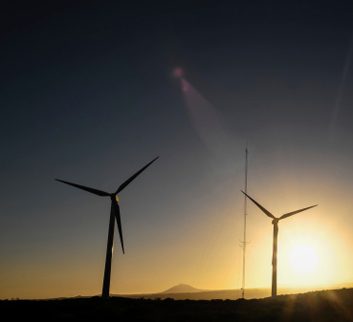
5. Renewables rise
Solar and wind energy aren’t just a sideshow anymore. The energy market has reached a tipping point in which these renewable sources of energy are competitive with, and in some places even cheaper than, fossil fuels. Their growth has been outstripping other technologies, with Europe leading the way in solar energy production, and the U.S. in wind production.
In Canada, we have been fortunate to be able to rely on hydroelectricity, which is a renewable form of energy, so solar and wind energy production has been slower to take hold-but that too is changing. In fact, the federal government has set a goal of generating 90 percent of electricity from clean sources by 2020. Currently, Ontario produces the most wind and solar energy, but other provinces are catching up and experimenting with biomass energy (produced from plant fuels) and tidal energy.
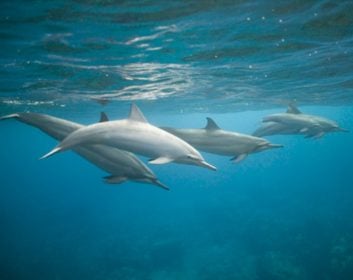
6. Marine protection
Plummeting fish stocks, disappearing coral, islands of floating refuse. These are just a few of our oceans’ long-neglected problems. But efforts to protect the Earth’s seas-and the vast diversity of species that depend on them-are finally gaining momentum. Two to three percent of our oceans, an area roughly the size of the U.S., are now classified as dedicated marine protected areas (MPAs); the area covered by these huge marine parks has doubled since 2010.
The standout example is Australia’s Great Barrier Reef Marine Park, established in 1975, which encompasses the world’s largest coral reef ecosystem and is home to more than 1,500 fish species as well as 30 whale and dolphin species. The Aussies showed their conservation muscle again recently with the establishment of a vast network of MPAs totalling an area the size of Great Britain, and covering more than one third of the country’s surrounding territorial waters. It includes the Coral Sea Marine Reserve, which is adjacent to the Great Barrier Reef and is one of the largest intact tropical ocean ecosystems in the world.
These marine parks dwarf Canada’s. However, we are protecting ecologically sensitive areas such as the confluence of the Saguenay and St. Lawrence rivers, home to the beluga and several other whale species. And in 2010, Canada established the Gwaii Haanas National Marine Conservation Reserve in Haida Gwaii (the Queen Charlotte Islands) off of British Columbia. A first in the world, it protects an area extending from a mountain summit all the way down to the submerged edge of the continental shelf.
What’s next? Conservationists are working with the world’s governments to establish more and larger areas where fishing is banned. These so-called “no-take” MPAs would create refuges for migrating species such as sea turtles, sharks and tunas throughout their lifespans.
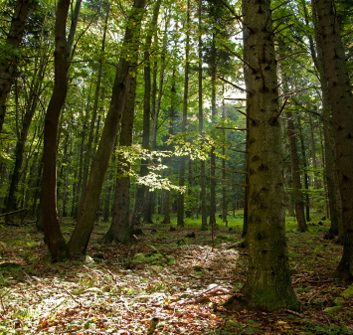
7. Forest first
Canada’s boreal forest stretches more than 5,000 kilometres from Newfoundland to the Yukon, and from the 50th parallel nearly to the Arctic Circle. It has been called the world’s “last great forest,” and is a critical source of fresh water and clean air as well as a vast storehouse for carbon that helps to buffer the impacts of global warming. So it’s fitting that it is the subject of one of the largest conservation agreements in history, signed in 2010 and renewed in 2013. The Canadian Boreal Forest Agreement is a collaboration between two long-time foes-the logging industry and environmental groups-to protect an area larger than the province of Alberta through sustainable forestry practices, logging moratoriums and conservation plans for the threatened woodland caribou herds.
The agreement isn’t perfect, but it sets a new standard that could guide the way that other global tracts of forest, such as the Amazonian rainforest, are managed. About one fifth of the Brazilian Amazon has been deforested in the past 40 years. Conservation programs have slowed this rate by nearly 80 percent since 2004. But this past year, deforestation there rose again.
Related:
• 5 healthy ways to spend Earth Day
• Earth Hour: What to eat when the lights are out
• 5 healthy things to do during Earth Hour
